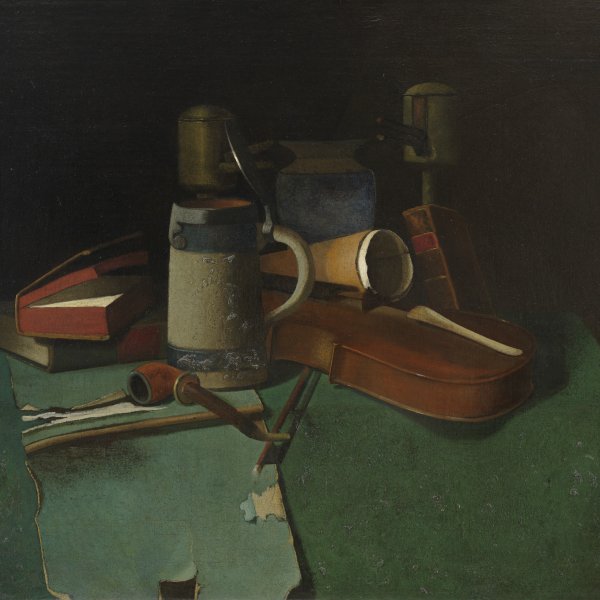Afternoon Sailing
ca. 1890
Oil on canvas.
30.5 x 50.9 cm
Museo Nacional Thyssen-Bornemisza, Madrid
Inv. no.
701
(1982.18
)
Not on display
Level 2
Permanent Collection
Level 1
Permanent Collection
Level 0
Carmen Thyssen Collection and Temporary exhibition rooms
Level -1
Temporary exhibition rooms, Conference room and EducaThyssen workshop
Afternoon Sailing is one of the rare landscapes painted by John Frederick Peto, an artist known for his still lifes. This luminous and open painting with its golden sand, sea and sky contrasts with his crammed, sombre studies of objects. Nonetheless, there is a special conceptual link between the two genres, since, as John Wilmerding points out, Peto “always [...] thought in still-life terms, so that his landscapes acquired the intimate charm of an interior studio arrangement, while his actual still-life paintings aspired to the monumentality and breadth of a personal landscape environment.”
The landscape in the Thyssen-Bornemisza collection was probably painted by Peto in 1890, following his permanent move from Philadelphia to the New Jersey coast. It depicts Toms River, a coastal town near his home in Island Heights. Although it displays a certain amount of influence of the seascapes painted by Thomas Eakins in 1870, the work is in keeping with Peto’s particular style. Wilmerding provides a psychological interpretation of the choice of this solitary spot with the sole presence of a small sailboat as a reflection of Peto’s intended retirement from the art scene.
Paloma Alarcó
The landscape in the Thyssen-Bornemisza collection was probably painted by Peto in 1890, following his permanent move from Philadelphia to the New Jersey coast. It depicts Toms River, a coastal town near his home in Island Heights. Although it displays a certain amount of influence of the seascapes painted by Thomas Eakins in 1870, the work is in keeping with Peto’s particular style. Wilmerding provides a psychological interpretation of the choice of this solitary spot with the sole presence of a small sailboat as a reflection of Peto’s intended retirement from the art scene.
Paloma Alarcó









